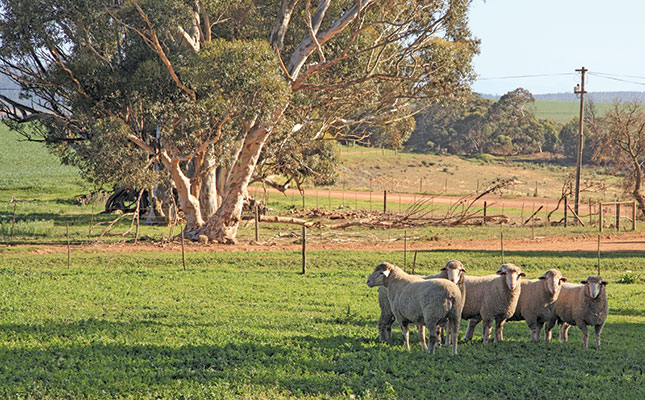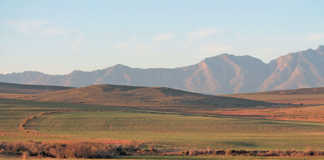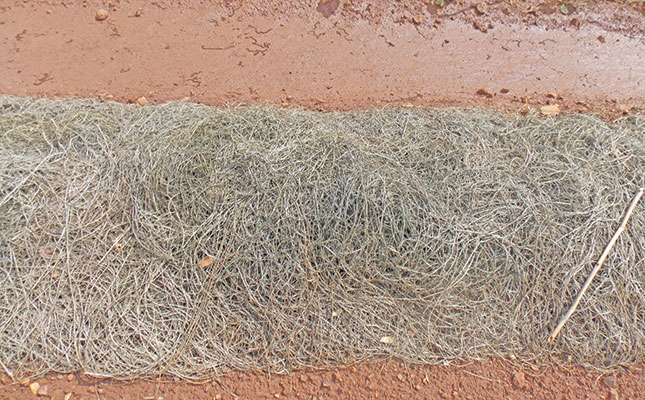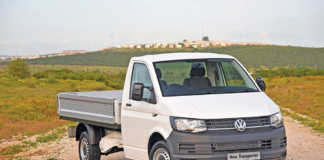
Photo: Glenneis Kriel
Since starting to keep production records in 1953, Hugo Wiehahn en Seuns Merino stud has won one competition after another, establishing itself as one of the finest Mutton Merino studs in the country.
Even more impressively, the stud has achieved the highest ram prices at regional auctions in Paarl and won the prize for the best fleeces at the South African Mutton Merino Championships four times over the past five years.
All of this was despite their farm Tussenbeide, situated near Caledon in the Overberg region of the Western Cape, receiving below-average rain over this period.
No pampering
According to Wiehahn, his Mutton Merino sheep can cope with almost anything that nature throws at them.
“The breed is highly resilient and better able to survive on lower-quality forage than most other breeds. Our sheep spend up to five months a year on stubble and marginal lands along the mountainsides with only phosphate and protein licks, without this affecting production negatively. This represents a major cost saving, especially during times of drought.”
The fact that the sheep are not picky eaters allows Wiehahn to feed them and his Jersey cattle ammonia (NH3)-treated straw to pull them through the winter. The straw is stacked in rows and covered with plastic, after which ammonia is pumped into the enclosed space.
This treatment increases the digestibility of the straw by up to 12% and the protein content from roughly 4% to 6,5%, which in turn improves the milk solid content of Wiehahn’s Jerseys up to 20%. It also increases the intake of the straw.
For the cows, a mixture of 750kg of silage is combined with 250kg of ammonia straw; for the sheep, 150kg of molasses, 150kg of lucerne and 150kg of maize are mixed with 150kg of ammonia straw. The straw and silage are produced from wheat and oats grown on the farm.
Not pampering his sheep has other advantages, according to Wiehahn. It enables them to adapt more easily to other production environments, whereas overfed sheep can become stressed and hence more susceptible to disease. Overfed animals may also be unfit and unable to walk far in search of food.
In addition, sheep given less feed gain weight rapidly in times of abundance, whereas those that are ‘spoon-fed’ can take longer to do so as they are used to getting more than they need.
Moreover, Wiehahn has found that this weight is gained without the addition of excess fat, ensuring that his lambs are graded at A2 or A3.
With the sheep grazing an extensive area of the farm, parasite and disease pressure is low, and pulpy kidney and bluetongue are the only scheduled vaccinations administered.
Background
Wiehahn became more serious about stud production in the 1980s when he decided to focus all his attention on one breed.
“I chose the Mutton Merino because it’s a dual-purpose breed with the ability to flourish under harsh climatic and veld conditions,” he recalls.
His stud is currently 500 ewes strong. In addition to this, he runs a 200-head Jersey cow dairy and has 500ha under wheat production in rotation with oats, produced for feed, as well as 8ha permanently under lucerne. The livestock have access to grain stover, veld and marginal land, as well as 700ha of land rented from a neighbour.
Wool quality
In addition to breeding sheep that can compete with any mutton sheep breed, Wiehahn and his sons, Johan and Francois, have worked hard to improve wool quality as a way to increase cash flow and farm earnings.
Traditionally, a challenge with the Mutton Merino has been the crimp in its fleece, which makes the wool appear thinner than it is.
“It may look as if the fleece has a diameter of 19 microns, but it then turns out to be 24 or 25 microns,” Wiehahn explains.
To produce finer wool, he has used selective breeding, and today the average thickness of his stud’s wool is 22,8 microns, with some of his sheep already producing wool of under 20 microns.
Sire and stud rams are selected based on best linear unbiased prediction (BLUP) values in terms of wool and weight characteristics.
“My motto is to replace a ram with one that is better. We’ve been keeping records of our sheep since 1953, and the South African Mutton Merino Breeders’ Society also uses a computer program that allows for the easy identification of paternal and maternal lines of each stud animal, as well as a range of important production statistics,” Wiehahn says.
The selection of ewes, based primarily on growth ability and maternal instincts, is less strict.
“Ewes are our factory. They need to regularly produce multiple offspring without any complications,” he says.
Breeding
Wiehahn uses laparoscopic insemination, as this produces genetic improvements far more rapidly by allowing farmers to use rams with greater efficiency.
One ram can be used on 100 ewes in the matter of a morning, whereas a ratio of one to 30 ewes is needed for natural breeding. With natural breeding, the ram also has to stay with the ewes for at least a month, greatly increasing the risk of injury.
Another advantage of laparoscopic insemination over artificial insemination is that it requires just 20% as much semen quantity per procedure.
One downside of laparoscopic insemination is that its success rate is only 75%, and rams are therefore placed with ewes at a ratio of one to eight a fortnight after insemination.
For the best results, ewes receive a flush feed mixture comprising lucerne and either oats or maize a month before insemination. Controlled internal drug release (CIDR) devices are inserted into the ewes two weeks in advance to synchronise oestrus cycles, and the devices are removed and ewes super-ovulated two days before insemination.
The rams have access to the best pastures on the farm and receive a pre-formulated commercial ram ration to ensure they are in top form during the breeding season and to finish them off in time for auctions.
Each ram has access to 30g of pellets a day for every 10kg bodyweight. These are introduced gradually into the diet over a couple of weeks to prevent acidosis. Lucerne and hay is supplied ad lib.
Wiehahn uses two mating seasons, in April and October. Rams conceived in April are ready for the national Bloemfontein auction in August and for selling from time to time on the farm. The latter are in especially high demand with farmers looking for hardy sheep, as they are growing at a time when less grazing is available .
Rams conceived in October are ready for the annual production auction in June.
Lambing
Lambing crates are used to ease management and shelter ewes against the elements and predation. The ewes are moved to the crates two days before lambing, and sent back to the veld with their lambs two days later.
Lambs are weighed at 100 days of age as well as at 270 days, and animals with evident defects are eliminated from the herd. Wiehahn’s years of experience as a show judge help him to easily identify animals with good conformation and potential.
“It really doesn’t pay to have excellent genetics if an animal can’t walk or eat properly. These defects will destroy all its genetic benefits,” he says.
Ram selection
Eighty rams are held back for auctioning when they are about 15 months old. Those that fail to make the grade during the first weigh-in are sold to the local abattoir when they weigh 45kg to 50kg at four to five months of age, depending on market and veld conditions. The others are sold after the second weigh-in.
“Only the best are selected for the live market to improve the Mutton Merino gene pool in general and in effect ensure the long-term sustainability of Mutton Merino farming,” says Wiehahn.
Email Hugo Wiehahn at [email protected].











